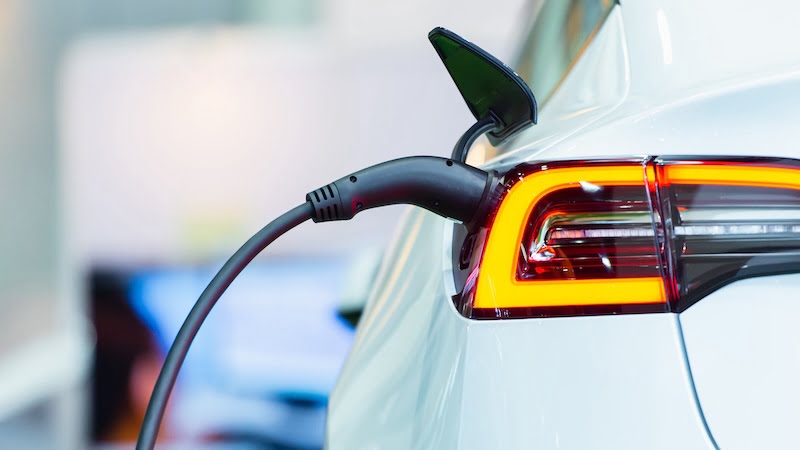
Electric cars are more expensive to buy than combustion engines. But you can also make money with electric cars – for example through the GHG quota. Another source of income is likely to open up soon. The keyword is: bidirectional charging. But what is that actually?
Since January 1, 2022, private individuals have been able to earn money with their electric cars. The background to this is the so-called greenhouse gas reduction quota (GHG quota). Vehicle owners of a purely battery-powered electric car with registration can sell these to companies in the form of saved CO2 emissions. However, another source of income is likely to open up soon.
What is bidirectional charging?
The term bidirectional charging means charging in two directions. Specifically, this means the ability of an electric vehicle to draw energy from the grid and feed it back into the grid or into another system.
This means that an electric car, for example, can serve not only as a means of transport, but also as a mobile energy source or battery. Bidirectional charging allows unused or excess energy from the battery of an electric vehicle to be fed into the home or general power grid in order to use it more effectively.
Types of bidirectional charging
- Vehicle-to-Load (V2L) / Vehicle-to-Device (V2D): In this variant of bidirectional charging, there is a classic socket in or on the vehicle that can be used to power various devices such as smartphones, laptops or other electrical devices. For example, you can charge your cell phone in the car or operate power tools using an external socket.
- Vehicle-to-Home (V2H): Using V2H, you can feed unused or excess energy from the battery of an electric car into your home's power grid to use it for your household appliances, for example. Your electric car must be connected to a wall box for this. It is also possible to use a vehicle as a power storage device. Solar energy generated during the day can also be used in the evening or at night.
- Vehicle-to-Grid (V2G): This term is often used as a synonym for bidirectional charging. In the V2G variant, electricity from the electric car is fed not only into the home's own power grid, but into the entire power grid. A large number of electric vehicles that feed electricity into a city's power grid can stabilize it.
Technical hurdles and legal situation
The good news first: Bidirectional charging is generally permitted in Germany. The EU Directive 2014/94/EU was implemented into national law in 2019. In concrete terms, this means that the technology is theoretically permitted in this country as part of the provision of an infrastructure for alternative fuels. However, there are still some technical hurdles in practice.
The biggest challenge is that electric cars run on direct current, while household electricity is based on alternating current. This means that conversion is required to feed the electricity into the household grid. When electricity flows from the household connection into an electric vehicle, a rectifier located in the vehicle or in a wall box takes over this process.
In order to feed electricity from the car into the home's power grid, an inverter is required – either in the vehicle or the charging station. However, only a few electric cars and wall boxes currently support this process. Retrofitting is possible, but often very expensive.
In addition, regulated communication is required to transmit the power requirement from the vehicle to the charging station. ISO 15118-20 is the common standard for this. V2H and V2G are therefore currently only partially marketable. With bidirectional charging, an electric vehicle should also be plugged into the socket both during the day and at night.
Also interesting:
Source: https://www.basicthinking.de/blog/2024/06/19/mit-dem-e-auto-geld-verdienen-was-ist-bidirektionales-laden/


